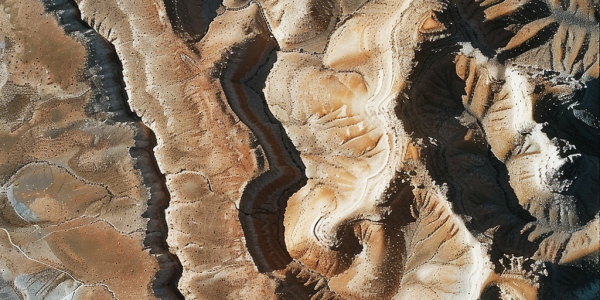Oregon Coast Scientists Study Past Earthquakes to Prepare for Future Tsunami Threats
Scientists along the Oregon Coast are investigating the seismic risks posed by the Cascadia Subduction Zone, focusing on past earthquakes and tsunamis to better prepare communities for future disasters. Recent sediment core studies aim to uncover evidence of the significant 1700 earthquake, enhancing understanding of geological hazards and informing emergency preparedness in the Pacific Northwest.
Global Seismic Event Linked to Greenland Rockslide Highlights Climate Change Impact
A recent seismic event traced to a massive rockslide in Greenland has raised alarms about the impact of climate change on geological stability. Detected globally for nine days, this unique phenomenon highlights the intricate link between glacier retreat and seismic activity, prompting discussions on early warning systems and the risks posed to coastal communities.
Study Links 2023 Turkey Earthquake to Surge in Women’s Menstrual Irregularities
A recent study published in Brain and Behavior reveals a sharp increase in menstrual irregularities among women in Turkey following the 2023 earthquake, rising from 14.3% to 44.8%. Researchers highlight the critical need for mental health support in disaster recovery, emphasizing the profound impact of trauma on women’s reproductive health. The findings underscore the importance of integrating mental health care into recovery plans to mitigate long-term health effects on survivors.
Marsquakes Could Reveal Hidden Water Source on Mars, Study Suggests
A team of scientists led by Penn State University believes that marsquakes could reveal the presence of underground liquid water on Mars. By listening to seismic activity on the red planet, researchers hope to detect hidden water sources deep below the surface. The study, published in the Journal of Geophysical Research: Planets, proposes using seismic waves to produce electromagnetic signals that indicate the presence of water miles below the surface. This innovative approach could revolutionize the search for water on Mars, offering valuable insights into current water reservoirs on the planet.
Linking Land Uplift to Earthquake Prediction
A recent study led by researchers from UC San Diego and the GFZ German Research Centre for Geosciences has revealed how the shape of the Earth’s landscape can help predict large earthquakes. By analyzing the uplift of land and the distribution of small earthquakes along subduction zones, scientists can identify potential seismic activity and assess earthquake risks in vulnerable regions.
Study Reveals Factors Behind Severity of 2024 Iida Bay Tsunami
Researchers from Tokyo Tech have uncovered the reasons behind the severity of the 2024 Iida Bay Tsunami, emphasizing the necessity for more accurate tsunami prediction technologies. The study delves into factors such as ocean floor topology, coastline shape, and seismic mechanisms linked to earthquakes that intensified the tsunamis. Implementing advanced countermeasures is crucial to safeguard against future occurrences.
Fiber Optic Gyroscope Developed to Monitor Ground Rotations in Seismically Active Area of Naples
Researchers in Naples, Italy have developed a state-of-the-art fiber optic gyroscope to monitor ground rotations caused by earthquakes in the Campi Flegrei volcanic region. This innovative technology aims to improve seismic activity understanding, enhance risk assessment, and strengthen early warning systems in densely populated areas. By capturing both linear and rotational movements during seismic events, the fiber optic gyroscope offers high-resolution, real-time monitoring capabilities. Integrating ground rotation measurements into existing sensor networks could provide valuable insights into volcanic earthquake signals, ultimately improving monitoring capabilities and risk mitigation strategies in seismically active regions.
DRAM Manufacturers Resume Production After Earthquake Impact
DRAM manufacturers are gradually resuming production following an earthquake, with minimal impact on total Q2 DRAM output estimated to be less than 1%, according to TrendForce. Major producers like Micron have resumed full operations, with advancements in cutting-edge technologies expected to impact bit production. The earthquake has led to temporary halts in quotations for DRAM markets, with contract prices expected to rise. Server DRAM prices may be affected by the earthquake, but stable supply levels are ensured. Overall, the earthquake’s impact on DRAM production is limited, with spot market prices remaining relatively stable.
Astrologer Suggests Astrological Causes for Recent Earthquake in New York City and New Jersey
Astrologer Kyle Thomas discusses the potential astrological causes behind the recent earthquake in New York City and New Jersey, attributing it to the positioning of Uranus in Taurus. He highlights the upcoming Jupiter-Uranus conjunction in 2024 and advises individuals to stay informed about the potential impacts of these astrological phenomena.
Taiwan’s Earthquake and the Fragility of the Global Tech Industry
Taiwan’s earthquake on April 3 had minimal casualties thanks to strong building codes and earthquake preparation. The island’s semiconductor industry, crucial to the global tech industry, largely emerged intact, but the fragility of these nodes in the global economy is a reminder of their importance.










